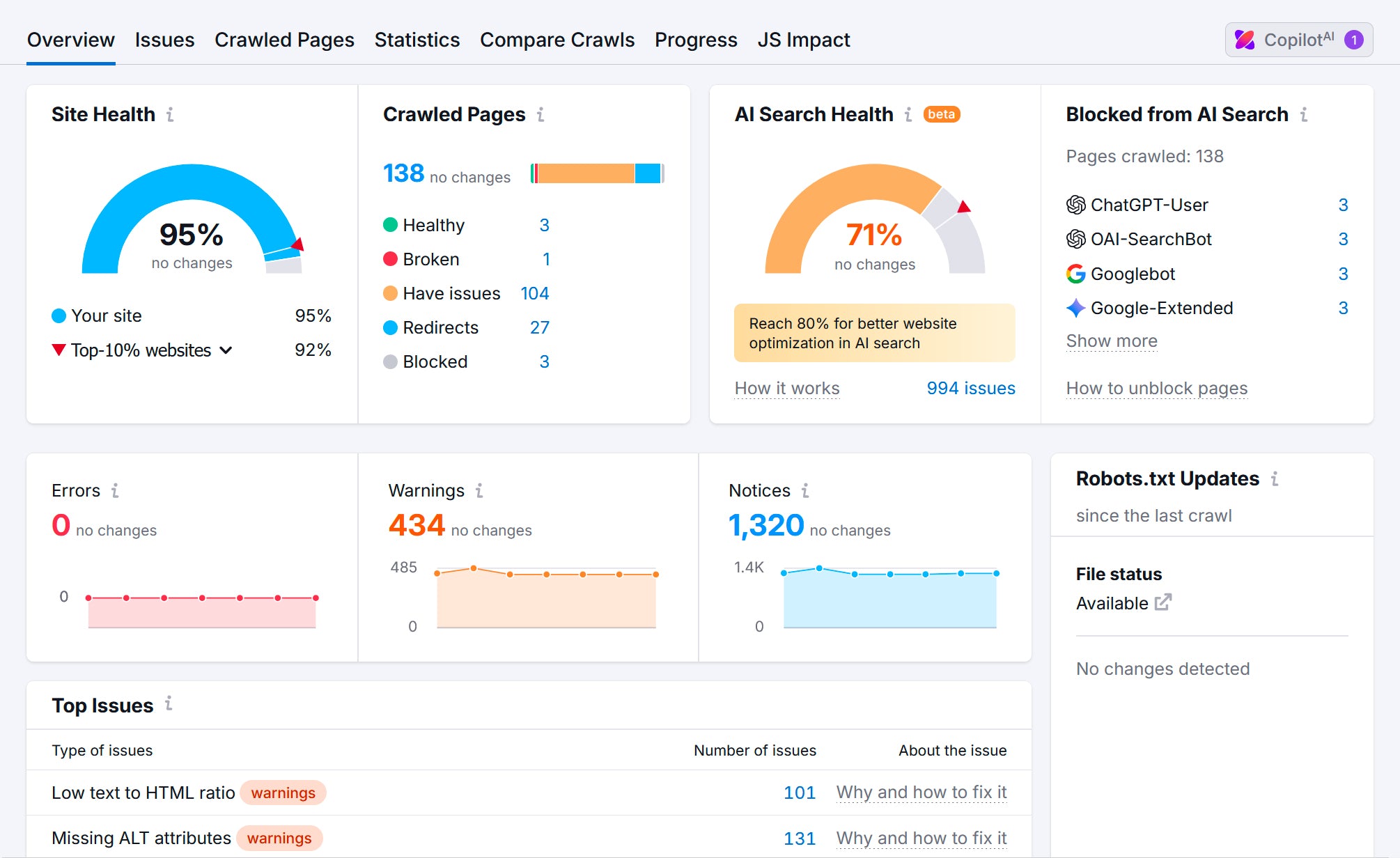How to grow your Shopify success with a recurring monthly checklist
Want to learn the secrets to growing your Shopify site? We've got a monthly checklist for you!

They Grow Up So Fast
When you plant seeds in your garden, you have to water them regularly to ensure growth. You can’t just walk away and expect a harvest. The same is true for your Shopify store. If you aren’t regularly paying attention to it, you risk finding weeds where roses should bloom.
Since you can’t pour water on your Shopify site (and we don’t suggest trying), what's the secret to ecommerce growth? It’s a similar recurring process of nurturing and maintenance, albeit a digital one. For online success you need to cultivate a routine of reviewing content, juggling keywords, tweaking CRO, optimizing pages and more. While some of that may sound daunting, we promise there’s a method to the madness. We suggest following a monthly checklist of maintenance tasks to shine the light on your shop’s success. You’ll take one week at a time and organize a monthly recurring process for success.
With this type of structured monthly plan, you’ll have the opportunity to review what’s working and improve what isn’t. This includes analyzing traffic, optimizing SEO, tweaking keywords, adjusting CRO and more. And if the idea of juggling all these responsibilities feels overwhelming, we’ll introduce you to our Shopify Success Plans where Sunrise Integration handles everything for you.
Let’s get started and put together a monthly checklist that highlights the most important tasks you should focus on. These are the activities that keep your store competitive and growing.

Defining Shopify Success
To be successful with your Shopify store, we should first define what success actually means. In our experience, it shouldn’t be just one thing, but rather a series of things that collectively equal ecommerce success. Your goal should be to create a sustainable business that keeps growing month after month. Think of Shopify as the engine for your success and like any engine, it’s made up of lots of different parts. You need to look at each of these parts and make sure they are running at optimal performance. In a car’s engine, you regularly check the oil, add fluids, clean filters and more. This is the typical cycle of automotive monitoring, maintenance and adjustments. Your Shopify site should have a similar cycle of SEO adjustments, content updates, conversion optimization, keyword updates and more. We’ll use all these tasks to create our monthly checklist.
Your success is going to come from zooming in and addressing these series of smaller monthly maintenance tasks to achieve improvements. And be aware that the improvements are going to come in small increments. You can’t just flip a switch and expect a flood of sales or traffic overnight. It’s actually an ongoing cycle of measuring, improving and repeating. If you set proper expectations for success, then you have a better chance of achieving it.
So, what are these small tasks that collectively mean success? We’ll now break down each of these tasks and start creating your monthly checklist.

Making Your Checklist
Hopefully by now, you understand the importance of ongoing store maintenance. Knowing that we need to focus on a series of smaller tasks, let’s build a checklist that you’ll use monthly to keep your Shopify store running. If you stick to this checklist, you’ll ensure nothing gets overlooked. Once you get used to a rhythm of steady improvement, it will become second nature and you’ll find yourself naturally thinking of these each month. You’ll watch as your Shopify site becomes a more efficient engine for business growth. Here are some the things that should be on your monthly checklist:
SEO reporting and enhancements
Get into the cadence of reviewing your SEO reporting and then performing enhancements based upon that data. This is how you can make sure your Shopify store continues to rank well in search results. You want to ensure your organic traffic is growing steadily. SEO is not something you set once and forget. It requires consistent analysis and ongoing adjustments that strengthen your visibility over time. With organic SEO, you’re investing in a foundation that works for you month after month. Instead of paying for ad clicks, your efforts compound over time as your site gains authority. Once you stop paying for ads, your ranking disappears. A good SEO strategy keeps you ranking for the long term. This is why you need to be reviewing and adjusting your SEO every week while spotting your monthly trends. There are some great tools to help with this process.
Use Google Search Console to see which keywords are driving the most impressions and clicks. This will also tell you which pages are ranking for them. Use the reporting to contrast what’s working and where there’s potential for improvement. You’ll want to look for any sudden drops in impressions or clicks. This can signal that your rankings are slipping or that other technical issues need addressing. Then use Google Analytics or Shopify Analytics to track the organic traffic. Compare your weekly performance to the previous week and look for trends. If your traffic has dipped, identify which pages or keywords are responsible.
Keyword improvements
Your SEO is dependent on the keywords so you need to get a picture of what keywords make up your site. You’ll want to use a tool like Ahrefs or SEMrush to monitor your keyword rankings, competitor performance and backlinks. These tools show how your site stacks up internally and against competitors. Your goal should be to boost your site’s authority and search visibility. You will research different keywords and see which ones you can use to help your site. There are deep research tools within these platforms that provide a lot of great information. There is a learning curve with these so keep that in mind. None of these tools will do the work for you. This is very much an active process requiring someone owning it. There is no button that returns magical results. You need to devise a strategy to find and monitor the correct keywords. These platforms aren’t cheap so expect an investment to unlock this data.
CRO updates
SEO and keyword management will help manage how customers find your site, but what are you doing to convert them once they reach your Shopify store? You now need to focus on conversion rate optimization (CRO) to get them shopping. CRO is how you turn that organic traffic into paying customers. Each week, review your analytics to see how visitors are coming to your site. Test different design elements like button placement, product image size, or CTA wording to see what drives more conversions. There is a lot of trial and error in this process so you should expect to review monthly as changes slowly permeate the search engines and LLMs.
Your CRO improvements are largely handled through Shopify theme design updates. Some of the things you can expect to do are simplifying your navigation, making product categories easy to find and ensuring your pages load quickly. The goal should be an experience that streamlines your purchasing and checkout process.

Theme/design updates
Design plays a bigger role in SEO than you may realize. Beyond helping with conversion rate optimization (as mentioned above), good design also tells search engines that your site is active and worth ranking. This is why your monthly strategy should include some type of design or content refresh. Every time you update your design or add new content, those changes send signals through your sitemap and page crawls. When Google crawls your site, they’re looking for signs of activity. Page or design updates trigger crawlers to re-index your content. You should be monitoring your sitemap.xml file to review pages and dates.
While design changes may seem like a creative task, they actually play a technical role too. Regular updates keep your Shopify site fresh and reinforce your ongoing SEO strategy.
Content updates
Another powerful way to grow your site is by building a monthly strategy around the creation of new content. You should be regularly updating and adding new content to your Shopify site. This is a signal to customers and search engines that your site is providing fresh new content and therefore should be indexed. And while you might not be able to add new products every month, there are other ways to add new content to your site.
Publishing a few new blogs every month is a great way to get new keywords added to your site. As you track your site’s keywords, you need a way to expand your keyword footprint. Blogs are a great way to generate new content with the “right” keywords you want to promote. Be careful not to create blogs with the explicit purpose of “packing” keywords as this will have the opposite effect. Having natural and organic content using the right keywords will work wonders for your SEO. Blogs answer real customer questions and rank for long-tail keywords that are easier to compete for.
Another great source of content are case studies. This type of content naturally adds keywords, product names and descriptions that match your site’s purpose. When you write a case study, you’re telling a story about how your product or service solved a specific problem. As you describe the challenges, the solutions, and the results, you’re naturally using keywords that your target audience searches. Case studies also tend to attract backlinks and longer on-page time because readers stay engaged with the real-world story.
You may also want to consider hosting monthly events like webinars or live sessions and creating landing pages around them. Each event gives you an opportunity to add new keywords to your site. These pages can include event details, recordings or transcripts. When optimized properly, event pages can attract visitors searching for industry discussions, tutorials, or expert insights. You who might end-up attracting people who may never have found your store otherwise. After each event, you can turn the material into a blog recap giving you another piece of fresh content to index.
Social Media
Of course, social media is a powerful way to help bring new traffic to your site. Each post, story, or update acts as a touch point that connects your brand to potential customers. Sharing consistent updates about your products, promotions, or customer stories helps keep your brand visible and builds trust over time. You should expect to post every week and track your stats every month. The key is to keep your messaging consistent with your site’s keywords and tone so your brand feels unified across every channel. Even simple updates or short videos about how your products work can boost awareness and create opportunities for customers to engage and share. Over time, these efforts lead to stronger brand recognition, more qualified leads, and higher sales directly through your Shopify store.
Review your reporting
And finally, don’t forget to use data to drive your strategy. Use the native analytics and reporting tools to get a picture of what is happening in your store. To make your SEO, CRO, and content efforts truly effective, you must review your analytics and reporting every week. The reports help you see what’s improving and what needs more attention. You can then formulate a plan on what to focus on every month. Without reviewing your analytics, you’re essentially guessing
You’ll want to review engagement metrics like average session duration, bounce rate, and returning visitor count. These numbers tell you whether your content is keeping people coming back. If visitors are leaving quickly, you might need to improve your headlines, reorganize your content, or adjust your layout to make key information easier to find.
Each report should lead to a list of goals for the next month. It could be anything from page updates to adding a new blog. You have the data to drive decisions. Every month builds on the last, guiding your strategy.

There’s So Much, I Need Help!
By now, you might be thinking this looks like a lot of work to accomplish every month, and you’re right. Between monitoring SEO, updating content, improving conversion rates and reviewing analytics, it can feel overwhelming. You’re already focused on running your business so this may be too much to add to your plate. Unless you have someone on your team dedicated to managing this, keeping up with all these ongoing tasks can quickly fall through the cracks. That’s where having the right partner makes all the difference. If you know you want all this but don’t have the time, we have a solution for you.
Our Shopify Success Plans are monthly recurring service retainers designed to give you a dedicated team of Shopify experts who can handle all of the above and more. We’ll keep your store running smoothly, identify opportunities for growth and focus on improvements. We offer three levels of Success Plans including Support, Growth, and Enterprise. Each one is structured around the most common stages of ecommerce maturity.
Support Plan
The Support Plan is designed for merchants who need reliable reporting and consultation to understand what is happening. This plan includes foundational Shopify support, consultation and reporting that provides data about the health of your site. You’ll get Shopify site and POS support, GA4 analytics reporting, and weekly consultation meetings with a dedicated account manager. You’ll also have access to a support ticket system to get quick answers to pressing questions.
This plan is perfect if you’re just starting out or if you want the peace of mind that experts are always available to monitor your site’s health.
Growth Plan
For merchants ready to scale traffic and increase revenue, the Growth Plan goes beyond support and provides proactive support with site optimization, SEO & keyword updates to grow sales and traffic. You’ll get everything in the Support Plan plus expanded ticket capacity, weekly SEO and keyword updates, personalized Shopify training, design and theme customization, conversion rate enhancements and site speed improvements.
This plan is built for businesses that know they could be performing better but lack the in-house expertise to identify and implement improvements. Growth Plan clients see tangible benefits like higher rankings in search, faster site performance, and improved conversions from existing traffic.
Enterprise Plan
The Enterprise Plan is designed for high-volume merchants and Shopify Plus brands with complex technical needs. In addition to everything in the Support and Growth Plan, Enterprise clients get unlimited support tickets, real-time Slack communication, extended support hours, custom Shopify development and priority service.
More importantly, this plan includes advanced technical capabilities such as custom UI extensions, tailored development services, and API integrations. If your business needs to connect Shopify with ERP, CRM, or warehouse systems, the Enterprise Plan ensures those workflows are built securely, efficiently, and at scale.
This level of service is ideal for merchants who want Shopify to work seamlessly as the hub of their operations.
Get Started Today
Growing your Shopify site is exciting because every month brings a new chance to expand your reach, attract fresh customers and strengthen your brand’s online presence. The real power of consistent monthly work is momentum. Every site update leads to improving visibility and boosting keyword rankings. These small but steady efforts transform your site into a growing asset that works for you around the clock.
Of course, staying consistent can be tough when you’re already busy managing inventory, doing customer support and shipping orders. If you’re looking for a trusted partner, Sunrise Integration can help. We have a Shopify Success Plan that fits your needs. Our team handles the strategy, content, and technical side of keeping your Shopify site growing every month. Our plans help you attract the right visitors, improve your SEO, and turn your store into a powerful sales engine.
Ready to grow with confidence? Contact us today to discuss the right plan for your business



